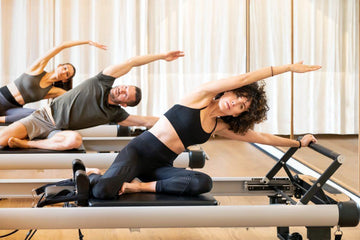Pilates is an exercise method developed by Joseph Pilates in the early 1900s. It focuses on strengthening the entire body, especially the core muscles, while promoting flexibility, balance and body awareness. This article looks at the history of Pilates, its principles, health benefits and how you can get started with Pilates.
History of Pilates
Joseph Pilates, the inventor of the method, originally called his exercise method "Contrology" because it emphasized controlling the body through the mind. He developed the system during World War I to help wounded soldiers regain their strength and flexibility. After emigrating to the United States, he opened his first Pilates studio in New York City in 1926, which quickly became popular with dancers and athletes.
Principles of Pilates
Pilates is based on six basic principles:
1. Concentration: Full mental attention to every movement.
2. Control: Conscious control over the body and movements.
3. Centering: Strengthening the core, consisting of the abdomen, lower back and hips.
4. Breathing: Conscious, deep breathing that supports the movements.
5. Precision: Accuracy and correct execution of each exercise.
6. Flowing movements: Smooth and harmonious movements.
Health benefits of Pilates
1. Improve core strength: Pilates aims to strengthen the deep muscles of the abdomen and back, which improves overall stability.
2. Increase flexibility: The gentle stretches and controlled movements increase the mobility of the joints.
3. Improve posture: Strengthening the back and abdominal muscles can contribute to better posture.
4. Stress relief: Focusing on breathing and movement can help calm the mind and reduce stress.
5. Injury prevention: Strengthening your core and improving flexibility can reduce your risk of injury.
6. Improve balance and coordination: Regular Pilates training can improve balance and coordination.
Pilates exercises
Pilates exercises can be performed on mats or special equipment such as the reformer. Here are some basic Pilates exercises:
1. Hundred: A breathing exercise that strengthens the abdominal muscles.
2. Bridge: Strengthens the lower back and glutes.
3. Single Leg Stretch: Targets the abdominal muscles and improves flexibility.
4. Teaser: An advanced core and balance exercise.
5. Swimmer: Strengthens the back and improves posture.
How to start Pilates
1. Find a class: Look for a certified Pilates instructor in your area or sign up for online classes.
2. Pay attention to correct execution: Start with basic exercises and pay attention to correct execution.
3. Regularity: Integrate Pilates into your training plan regularly to achieve the best results.
4. Listen to your body: work at your own pace and avoid overloading.
Conclusion
Pilates is a versatile exercise method that offers numerous health benefits, from improving core strength and flexibility to reducing stress. Whether you're a beginner or an advanced athlete, Pilates can help you achieve your fitness goals and develop better body awareness. Try it and experience the positive effects of this holistic exercise method for yourself.





